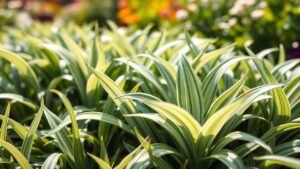
Hey there, plant lovers! Ever feel like your garden’s missing a little magic? Maybe your flowerbeds look a bit flat, or you’re tired of the same old blooms every year. What if I told you there’s a secret weapon for adding charm, color, and even a buzz of friendly pollinators? Enter flowers with bell-shaped petals—nature’s fairy lights. In this post, we’ll show you why these beauties deserve a spot in your garden, which ones to try (even if you’re not a pro), and how to keep them happy. By the end, you’ll be ready to turn your yard into a whimsical wonderland. Let’s dig in!
Why Bell-Shaped Blooms Are Your Garden’s New Best Friend
Imagine your garden as a cozy café where bees, hummingbirds, and butterflies stop by for a snack. Bell-shaped flowers are like the neon “OPEN” sign they can’t resist. Their drooping petals protect pollen from rain, and the shape acts as a landing pad for tiny visitors. Take Sarah, a neighbor here in Portland who swapped her roses for foxgloves last spring. By July, her yard was buzzing—literally! Plus, these flowers add height and texture. Think of them as the curtain drapes in your garden’s theater, framing your space with drama.
Top 5 Bell-Shaped Flowers That Won’t Quit (Even If You Forget to Water)
Not all bell flowers are high-maintenance divas. Here’s our no-fuss hit list:
- Lily of the Valley: Tiny white bells that smell like heaven. Perfect under shady trees (like those in Forest Park).
- Coral Bells: Drought-tolerant and comes in wild colors—try ‘Peach Flambe’ for a sunset vibe.
- Foxgloves: Towering spikes that make fairytale backdrops. Pro tip: They self-seed, so you get free plants next year!
- Canterbury Bells: Big, bold blooms that say “look at me!” without needing coddling.
- Columbine: Twisty petals that hummingbirds adore. Great for rock gardens.
Want more ideas? The Old Farmer’s Almanac has a killer guide to native bell flowers.
Keep ‘Em Alive: Sun, Soil, and the Secret Third Thing
Most bell-shaped flowers have one golden rule: Don’t drown them. Well-draining soil is key—especially here in the Pacific Northwest where rain loves to overstay its welcome. Mix in some compost (we’re fans of GreenThumb Gardens’ organic blend) to keep roots happy. Sun needs vary: Lily of the Valley thrives in shade, while columbine craves morning light. And pests? Slugs might RSVP, but a sprinkle of crushed eggshells sends them packing.
Design Hacks Even Your Neighbor Will Copy
Bell flowers play nice with others. Pair tall foxgloves with spiky lupines for a vertical punch, or let coral bells spill over a stone wall. For a Portland-inspired look, tuck bluebells between ferns and hostas—it’s like a mini Columbia River Gorge in your backyard. And don’t forget containers! A pot of trailing campanula on your porch screams “I’ve got style” without screaming “I spent hours on this.”
So, ready to jingle all the way to a jaw-dropping garden? Bell-shaped flowers aren’t just pretty faces—they’re pollinator magnets, low-key growers, and design superheroes. Whether you’re revamping a tiny balcony or a sprawling yard, these blooms add that “something special” without the stress. At GreenThumb Gardens, we’re all about helping you grow smarter, not harder. Swing by our nursery next time you’re near Mt. Tabor, or check out our online guides for more inspo. Now go make those bells ring!
P.S. If you’re still stuck, the Royal Horticultural Society has a deep dive on pairing plants. Happy gardening!





